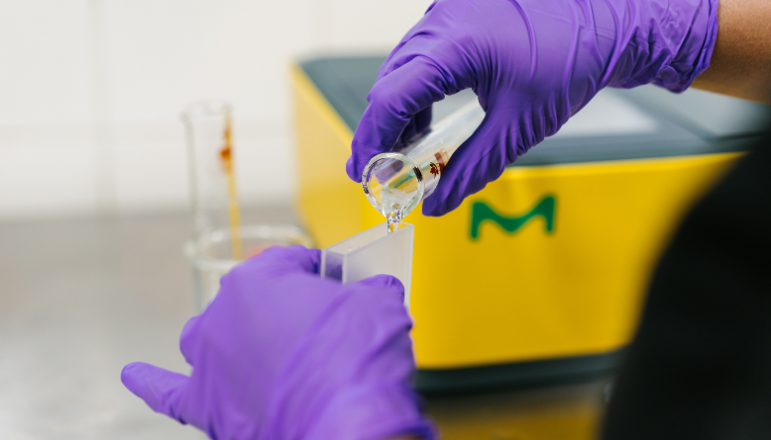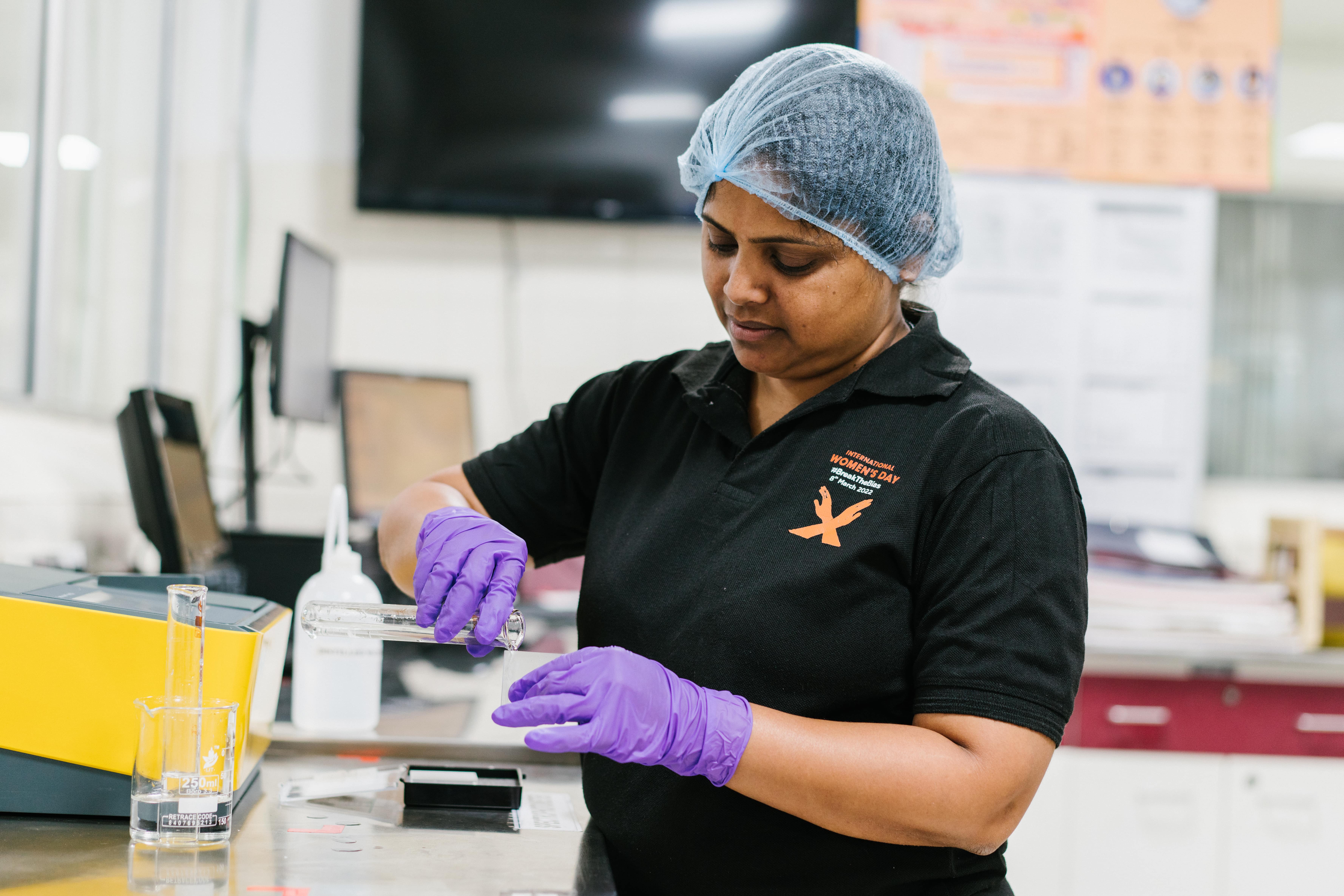Food Safety at HCCB: A System Built for Consistency, Built for Trust
This World Food Safety Day, we reaffirm the systems at HCCB that make everyday refreshment safe, grounded in regulation, strengthened by global food safety standards, and upheld through consistent practice.
At home, in the office, or on the go, we all reach for beverages every day. The need for a quick refreshment is simple, instinctive, and often made without a second thought. What most people don’t think about in that moment is what makes this beverage safe.
Beneath that everyday habit lies a complex and robust system designed to ensure that what you drink is safe, consistent, and trustworthy every single time. In a country like India, where packaged beverages serve millions of people each day, that system carries even more weight.
At HCCB, food safety is integral to how our plants operate, how our teams are trained, and how our systems are designed. From following FSSAI regulations to applying global food safety standards, we treat food safety as a responsibility that runs through everything we do.
This World Food Safety Day, we reaffirm the system we already rely on. A system built for consistency. A system built for trust.
Understanding Global Food Safety Standards
Food safety standards provide a structured framework to ensure that food and beverages are manufactured, handled, and delivered safely. While each standard plays a different role, they all work toward the same goal: reducing risk and protecting public health. Here’s a closer look at three key standards that shape food safety across the industry:
1. FSSAI (Food Safety and Standards Authority of India)
The Food Safety and Standards Authority of India (FSSAI) is the national authority responsible for regulating and supervising food safety. Its role is to define transparent, science-based, enforceable standards that all food and beverage manufacturers in India must follow.
FSSAI sets requirements for:
- The quality and safety of raw materials
- Hygiene standards during processing and handling
- Labelling and packaging compliance
- Storage, transportation, and sampling protocols
FSSAI ensures that all food businesses meet a minimum standard of safety, and its regulations serve as the legal foundation for any food safety program operating in India.
2. FSSC 22000 (Food Safety System Certification)
FSSC 22000 (Food Safety System Certification) is a globally recognised certification scheme specifically developed for the food and beverage sector. It goes beyond regulatory compliance by providing a structured system to identify, evaluate, and control food safety hazards across the entire supply chain.
This standard focuses on:
- Risk-based thinking and hazard analysis (HACCP)
- Traceability and documentation of safety processes
- Preventive control systems at every stage of production
- System-wide audits and verification methods
- Continual improvements in the Food Safety system
FSSC 22000 is built on ISO standards but adds industry-specific requirements to help organisations manage operational risks more proactively.
3. ISO 9001:2015
The ISO 9001:2015 standard is one of the most widely used quality management frameworks across industries, including food and beverages. Although it is not food-specific, it complements food safety standards by promoting process consistency, efficiency, and continuous improvement.
Key aspects of ISO 9001 include:
- Defining standard operating procedures (SOPs)
- Setting measurable objectives and tracking performance
- Applying the Plan–Do–Check–Act (PDCA) methodology
- Creating a culture of documentation and review
This framework supports long-term quality goals by helping businesses reduce variation, improve traceability, and strengthen internal accountability.

Integrating Global Food Safety Standards: From Regulatory to Systemic
Food safety begins with strong regulations. In India, the Food Safety and Standards Authority of India (FSSAI) outlines the mandatory requirements that Food Business Operators must meet. These include quality checks, hygiene standards, process controls, product standards, labelling requirements, traceability, licensing, and ingredient specifications.
To ensure a systematic approach and maintain consistency and scalability, many companies also adopt international standards, such as the ISO and FSSC frameworks. These help reduce variability, enable process improvement, and support long-term quality assurance.
At HCCB, we operate in full compliance with FSSAI regulations, standards, and guidelines. We enhance this with two global systems: FSSC 22000 and ISO 9001:2015. These certifications provide a structured approach to implementing food safety measures across all units. Together, they provide a foundation for:
- Building capability within teams
- Identifying and controlling food safety risks
- Standardising procedures across plants
- Validating and verifying key steps
- Enabling continuous improvement through the Plan–Do–Check–Act cycle
This helps us:
- Design clear and consistent procedures across all plants
- Align food safety responsibilities across functions, not just departments
- Ensure that training, monitoring, and improvement efforts draw from a shared system
- Use data and audit feedback to improve across locations, not in silos
Rather than creating complexity, these systems work together. They help us translate regulatory requirements into daily discipline and operational consistency.
Making Compliance Part of Daily Operations
Compliance must be built into the way teams work, how equipment is maintained, and how issues are prevented. Consistent compliance requires strong infrastructure, trained people, and clear operational checks.
Every HCCB plant is staffed with trained professionals who are responsible for implementing and monitoring food safety systems. Our facilities are designed to minimise contamination risks and automate safety controls. These include:
- Closed-loop production systems that remove manual handling
- Digitised Clean-in-Place (CIP) technology for automated sanitation
- Multilayer interlocks that act as system safeguards
- Nitro Hot Fill packaging, a proprietary process where liquid nitrogen is added to PET bottles to improve bottle rigidity and reduce oxygen, helping extend shelf life
Each plant maintains a compliance tracker that includes FSSAI, global systems, and internal HCCB standards. These are reviewed regularly and used for performance tracking and audit readiness.
Why Internal Audits Matter for Food Safety Systems
Internal audits play a key role in maintaining high food safety standards. They help companies identify operational risks early, address process gaps, and continuously improve through structured feedback.
At HCCB, we conduct regular internal audits at every manufacturing unit. These are led by trained and experienced teams, using protocols aligned to our system standards. When an issue is found, the follow-up process includes:
- Root Cause Analysis (RCA) to understand what went wrong
- A formal Corrective and Preventive Action (CAPA) plan
- Review and approval by plant and corporate management
- Sharing of insights across plants to standardise improvements
Several of our best practices today were shaped through audit feedback. For example, improvements in cleaning intervals and sampling protocols were directly influenced by insights from ISO and FSSC audit reviews. This allows us to reduce variation between locations and apply stronger controls uniformly.
Raw Material Quality: The First Line of Food Safety
Food safety begins at the source. Ingredients that don’t meet safety standards can compromise the final product, no matter how robust the manufacturing process is. That’s why careful supplier selection and raw material testing are essential.
At HCCB, supplier selection and material approvals are managed in accordance with Indian legal requirements and global quality protocols. Once suppliers are approved, our teams follow strict incoming checks on every batch of:
- Water
- Carbon dioxide
- Sweeteners
- Packaging materials
- Closures
Only materials that pass these quality and safety checks are cleared for production. This ensures that our products begin with ingredients we can trust, and that customers can trust too.
Embedding Global Food Safety Standards Our Culture and People
No system works without the people who run it. A food safety culture ensures that everyone, from shop floor operators to plant managers, understands their role in protecting consumers. Training, communication, and behavioural reinforcement are essential. Global standards are effectively implemented at our facilities and are routinely reviewed for consistency.
We invest heavily in team training across every HCCB location. These programs cover hygiene, process discipline, and food safety protocol. Beyond training, we conduct QSE (Quality, Safety, Environment) Culture Drives, which include:
- Visual reminders across the plant
- Discussions during team huddles
- Refresher sessions linked to real incidents
- Plant-wide engagement on safety themes
Our goal is to make food safety instinctive. It should be part of the way people work, not something they are reminded of during audits.
Reinforcing the System That Works
Food safety is a process that relies on systems that are clear, adaptable, and supported by data. The best food safety models are the ones that work every day, not just when something goes wrong.
We approach global food safety standards as part of how we run our business. With FSSAI at the core, and global systems to reinforce it, we have built a framework that can scale with us and adapt as the industry evolves.
This World Food Safety Day, we are recognising the value of what already works and strengthening it further through training, review, and refinement.
Every product that leaves our facility is backed by systems, people, and standards that are focused on one thing: safety, so that the consumer never has to think about it.



Comments